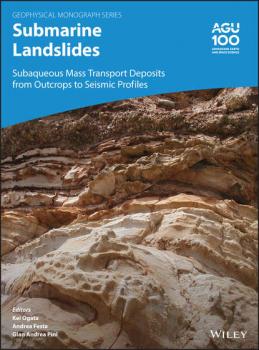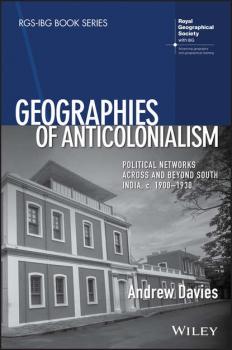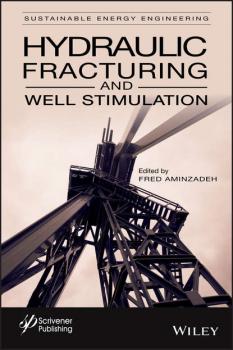MREADZ.COM - много разных книг на любой вкус
Скачивание или чтение онлайн электронных книг.Revolutionizing Tropical Medicine
A comprehensive resource describing innovative technologies and digital health tools that can revolutionize the delivery of health care in low- to middle-income countries, particularly in remote rural impoverished communities Revolutionizing Tropical Medicine offers an up-to-date guide for healthcare and other professionals working in low-resource countries where access to health care facilities for diagnosis and treatment is challenging. Rather than suggesting the expensive solution of building new bricks and mortar clinics and hospitals and increasing the number of doctors and nurses in these deprived areas, the authors propose a complete change of mindset. They outline a number of ideas for improving healthcare including rapid diagnostic testing for infectious and non-infectious diseases at a point-of-care facility, together with low cost portable imaging devices. In addition, the authors recommend a change in the way in which health care is delivered. This approach requires task-shifting within the healthcare provision system so that nurses, laboratory technicians, pharmacists and others are trained in the newly available technologies, thus enabling faster and more appropriate triage for people requiring medical treatment. This text: Describes the current burden of communicable and non-communicable diseases in low- to middle-income countries throughout the world Describes the major advances in healthcare outcomes in low-to middle-income countries derived from implementation of the United Nations/World Health Organisation’s 2000 Millennium Development Goals Provides a review of inexpensive rapid diagnostic point-of-care tests for infectious diseases in low-resource countries, particularly for people living in remote rural areas Provides a review of other rapid point-of-care services for assessing hematological function, biochemical function, renal function, hepatic function and status including hepatitis, acid-base balance, sickle cell disease, severe acute malnutrition and spirometry Explores the use of low-cost portable imaging devices for use in remote rural areas including a novel method of examining the optic fundus using a smartphone and the extensive value of portable ultrasound scanning when x-ray facilities are not available Describes the use of telemedicine in the clinical management of both children and adults in remote rural settings Looks to the future of clinical management in remote impoverished rural settings using nucleic acid identification of pathogens, the use of nanoparticles for water purification, the use of drones, the use of pulse oximetry and the use of near-infrared spectroscopy Finally, it assesses the potential for future healthcare improvement in impoverished areas and how the United Nations/World Health Organization 2015 Sustainable Development Goals are approaching this. Written for physicians, infectious disease specialists, pathologists, radiologists, nurses, pharmacists and other health care workers, as well as government healthcare managers, Revolutionizing Tropical Medicine is a new up-to-date essential and realistic guide to treating and diagnosing patients in low-resource tropical countries based on new technologies.
Movement Equations 5
The final volume in the Non-deformable Solid Mechanics set, Movement Equations 5 deals with the dynamics of sets of solids. This volume provides the appropriate mathematical tools (torsor calculus and matrix calculus) to obtain and solve the equations of motion for a chain of solids. These equations are then used to acquire the information necessary for the design of mechanical systems. Also examined are the vibratory behavior of continuous (deformable) systems, rigid and deformable solids, and sets of several solids. The book concludes with a study of the response of an excited system as a function of the excitation frequency. Accompanied by detailed examples, this book is aimed primarily at students, but would also serve as a valuable support for working engineers and teacher-researchers.
Submarine Landslides
An examination of ancient and contemporary submarine landslides and their impact Landslides are common in every subaqueous geodynamic context, from passive and active continental margins to oceanic and continental intraplate settings. They pose significant threats to both offshore and coastal areas due to their frequency, dimensions, and terminal velocity, capacity to travel great distances, and ability to generate potentially destructive tsunamis. Submarine Landslides: Subaqueous Mass Transport Deposits from Outcrops to Seismic Profiles examines the mechanisms, characteristics, and impacts of submarine landslides. Volume highlights include: Use of different methodological approaches, from geophysics to field-based geology Data on submarine landslide deposits at various scales Worldwide collection of case studies from on- and off-shore Potential risks to human society and infrastructure Impacts on the hydrosphere, atmosphere, and lithosphere
Static Conceptual Fracture Modeling
Modelling of flow in naturally fractured reservoirs is quickly becoming mandatory in all phases of oil and gas exploration and production. Creation of a Static Conceptual Fracture Model (SCFM) is needed as input to create flow simulations for today and for prediction of flow into the future. Unfortunately, the computer modelers tasked with constructing the gridded fracture model are often not well versed in natural fracture characterization and are often forced to make quick decisions as to the input required by the software used to create these models. Static Conceptual Fracture Modelling: Preparing for Simulation and Development describes all the fracture and reservoir parameters needed to create the fracture database for effective modelling and how to generate the data and parameter distributions. The material covered in this volume highlights not only natural fracture system quantification and formatting, but also describes best practices for managing technical teams charged with creating the SCFM. This book will become a must on the shelf for all reservoir modelers.
Geographies of Anticolonialism
A fresh approach to scholarship on the diverse nature of Indian anticolonial processes. Brings together a varied selection of literature to explore Indian anticolonialism in new ways Offers a different perspective to geographers seeking to understand political resistance to colonialism Addresses contemporary studies that argue nationalism was joined by other political processes, such as revolutionary and anarchist ideologies, to shape the Indian independence movement Includes a focus on a specific anticolonial group, the “Pondicherry Gang,” and investigates their significant impact which went beyond South India Helps readers understand the diverse nature of anticolonialism, which in turn prompts thinking about the various geographies produced through anticolonial activity
Materials for Carbon Capture
Covers a wide range of advanced materials and technologies for CO2 capture As a frontier research area, carbon capture has been a major driving force behind many materials technologies. This book highlights the current state-of-the-art in materials for carbon capture, providing a comprehensive understanding of separations ranging from solid sorbents to liquid sorbents and membranes. Filled with diverse and unconventional topics throughout, it seeks to inspire students, as well as experts, to go beyond the novel materials highlighted and develop new materials with enhanced separations properties. Edited by leading authorities in the field, Materials for Carbon Capture offers in-depth chapters covering: CO2 Capture and Separation of Metal-Organic Frameworks; Porous Carbon Materials: Designed Synthesis and CO2 Capture; Porous Aromatic Frameworks for Carbon Dioxide Capture; and Virtual Screening of Materials for Carbon Capture. Other chapters look at Ultrathin Membranes for Gas Separation; Polymeric Membranes; Carbon Membranes for CO2 Separation; and Composite Materials for Carbon Captures. The book finishes with sections on Poly(amidoamine) Dendrimers for Carbon Capture and Ionic Liquids for Chemisorption of CO2 and Ionic Liquid-Based Membranes. A comprehensive overview and survey of the present status of materials and technologies for carbon capture Covers materials synthesis, gas separations, membrane fabrication, and CO2 removal to highlight recent progress in the materials and chemistry aspects of carbon capture Allows the reader to better understand the challenges and opportunities in carbon capture Edited by leading experts working on materials and membranes for carbon separation and capture Materials for Carbon Capture is an excellent book for advanced students of chemistry, materials science, chemical and energy engineering, and early career scientists who are interested in carbon capture. It will also be of great benefit to researchers in academia, national labs, research institutes, and industry working in the field of gas separations and carbon capture.
Hydraulic Fracturing and Well Stimulation
Hydraulic fracturing (or “fracking”) has been a source of both achievement and controversy for years, and it continues to be a hot-button issue all over the world. It has made the United States an energy exporting country once again and kept the price of gasoline low, for consumers and companies. On the other hand, it has been potentially a dangerous and destructive practice that has led to environmental problems and health issues. It is a deeply important subject for the petroleum engineer to explore as much as possible. This collection of papers is the first in the series, Sustainable Energy Engineering, tackling this very complex process of hydraulic fracturing and its environmental and economic ramifications. Born out of the journal by the same name, formerly published by Scrivener Publishing, most of the articles in this volume have been updated, and there are some new additions, as well, to keep the engineer abreast of any updates and new methods in the industry. Truly a snapshot of the state-of-the-art, this groundbreaking volume is a must-have for any petroleum engineer working in the field, environmental engineers, petroleum engineering students, and any other engineer or scientist working with hydraulic fracturing.
UNESCO Global Geoparks
Recently, UNESCO has gradually started to recognize world geoparks ? territorial spaces with a geological heritage of international importance. This classification presents real challenges. Development strategies must align with the recommendations advocated by various non-governmental organizations. It is also necessary to involve the local actors, both in the preparation of application forms and in the implementation of a management plan that is suitable for sustainable global development. Managing the tensions and asymmetries that exist between the different groups of actors (politicians, managers, scientists, representatives of local populations) constitutes another major issue. It is in this context and through various case studies that this book questions the aims of the UNESCO global geoparks ? in terms of heritage inventory and conservation, the participation of local populations, the local development of a territory and its enhancement through heritage interpretation.
Molecular Technology, Volume 3
Edited by foremost leaders in chemical research together with a number of distinguished international authors, this third volume summarizes the most important and promising recent developments in material science in one book. Interdisciplinary and application-oriented, this ready reference focuses on innovative methods, covering new developments in photofunctional materials, polymer chemistry, surface science and more. Of great interest to chemists as well as material scientists alike.
Cosmetic Creams
A guide to cosmetic creams that focuses on formulation, production, and safety concerns Cosmetic Creams: Development, Manufacture and Marketing of Effective Skin Care Products puts the focus on the structure and formulation of a cosmetic cream, the production process, the effect of each ingredient, as well as safety considerations. Comprehensive in scope, the book contains a basic definition of cosmetics and describes the types of skin creams currently on the market, the major ingredients used, and example compositions. The author, Wilfried Rähse?a noted expert on the topic?offers guidelines for estimating manufacturing costs and includes procedures for an effective safety assessment. The book contains information on various aspects of skin penetration and production and covers issues like materials used and hygienic packaging. In addition, Rähse reviews legal regulations with an emphasis on the European market. He discusses GMP and EHEDG directives. This important book: -Offers a comprehensive resource that explores all aspects of cosmetic cream manufacturing and marketing -Provides valuable guidelines for practitioners in the field -Covers the underlying technologies of cosmetic creams -Includes a review of raw material and manufacturing costs, hygiene and safety, and legal regulations -Written by an author with more than 30 years? experience in the industry Written for cosmetic chemists, chemists in industry, chemical engineers, dermatologists, Cosmetic Creams: Development, Manufacture and Marketing of Effective Skin Care Products, offers a unique industrial perspective of the topic that is comprehensive in scope.









